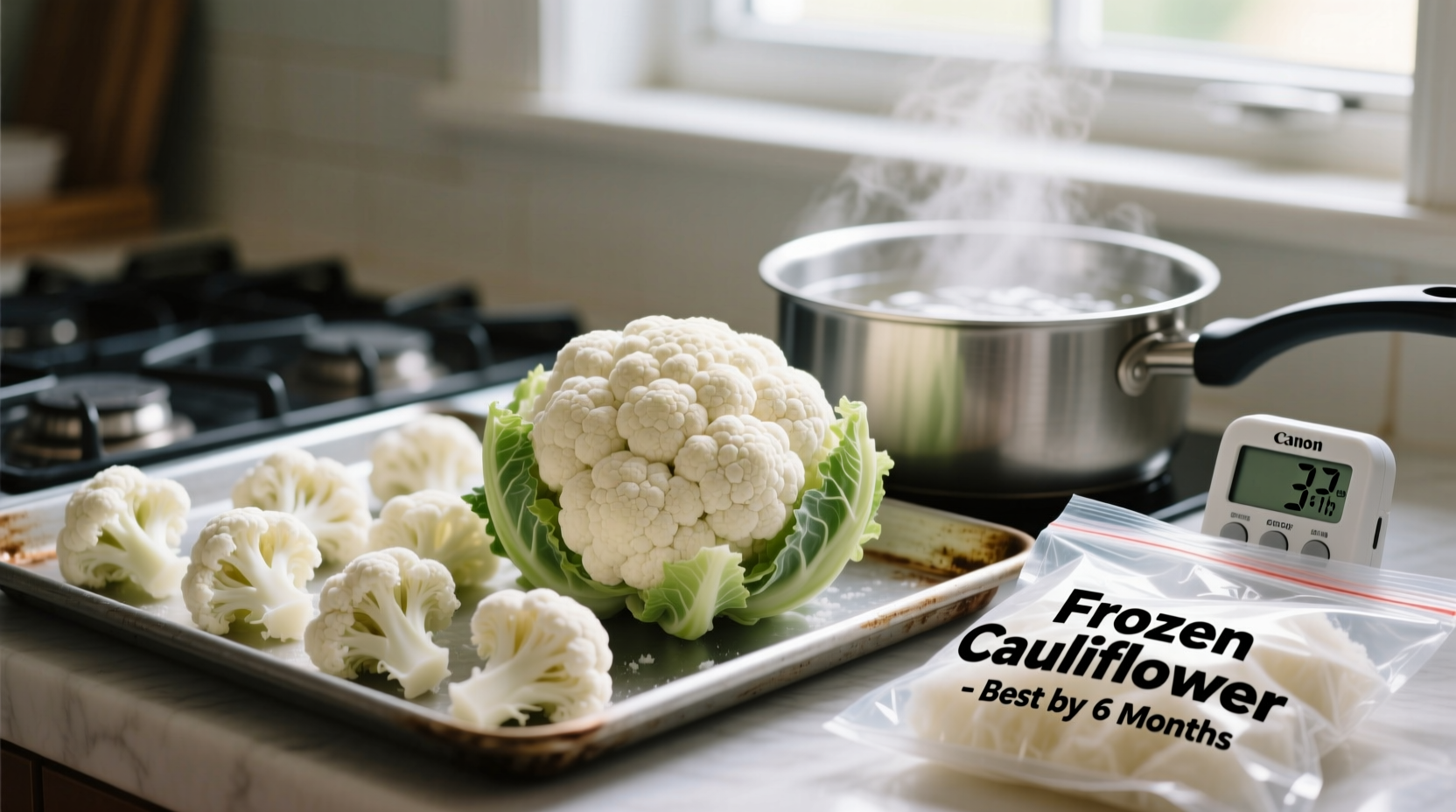Freezing cauliflower correctly transforms this versatile vegetable into a year-round kitchen staple. Whether you've harvested too much from your garden or found a great deal at the market, proper freezing techniques ensure you'll have crisp, flavorful cauliflower ready for your favorite recipes months later.
The Science Behind Successful Cauliflower Freezing
Understanding the cellular structure of cauliflower explains why proper preparation matters. When frozen incorrectly, ice crystals form within the vegetable's cells, rupturing cell walls and causing mushiness upon thawing. The National Center for Home Food Preservation confirms that blanching deactivates enzymes responsible for spoilage and texture degradation, preserving both flavor and nutritional content.
| Preparation Method | Shelf Life | Texture After Thawing | Best For |
|---|---|---|---|
| Raw freezing | 2-3 months | Mushy, waterlogged | Smoothies only |
| Blanched freezing | 10-12 months | Firm, near-fresh quality | All cooking methods |
| Riced & blanched | 8-10 months | Light, separate grains | Cauliflower rice dishes |
Step-by-Step Freezing Process
Follow these professional chef-tested steps for freezer-ready cauliflower that maintains its quality:
1. Selection and Preparation
Choose firm, heavy heads with tight curds and no brown spots. Remove outer leaves and trim the stem flush with the base. The USDA recommends using cauliflower within 1-2 days of purchase for optimal freezing results.
2. Cutting Technique
Cut into uniform 1½-inch florets for even blanching. For cauliflower rice, pulse in a food processor until resembling rice grains (about 10-15 pulses). Smaller pieces freeze faster and more evenly.
3. Blanching Essentials
Boil florets for exactly 3 minutes (rice requires 2 minutes). Immediately plunge into ice water for the same duration to stop cooking. This critical step preserves color, texture, and nutrients while eliminating surface bacteria. Cornell University's Food Science Department confirms this timing prevents both under and over-processing.
4. Drying and Packaging
Thoroughly dry blanched pieces on clean towels—moisture causes freezer burn. Spread in a single layer on baking sheets and freeze for 1-2 hours before transferring to airtight containers. This flash-freezing technique prevents clumping.
5. Storage Protocol
Use heavy-duty freezer bags or rigid containers with ½-inch headspace for expansion. Remove as much air as possible from bags using the straw method. Label with contents and date—frozen cauliflower maintains peak quality for 10-12 months at 0°F (-18°C) or below.

Avoid These Common Freezing Mistakes
Even experienced home cooks make these errors that compromise frozen cauliflower quality:
- Skipping blanching—leads to rapid quality degradation and off-flavors within weeks
- Insufficient drying—causes ice crystals and freezer burn
- Overpacking containers—prevents proper air circulation during freezing
- Using regular storage bags—not designed for freezer temperatures
Using Your Frozen Cauliflower
For most cooking applications, you don't need to thaw frozen cauliflower. Roast florets directly from frozen at 425°F for 25-30 minutes for perfect caramelization. When making mashed cauliflower or soups, add frozen pieces directly to boiling liquid. For stir-fries, thaw slightly in the refrigerator first to maintain texture.
Quality degradation timeline: Months 1-3 show virtually no difference from fresh; months 4-8 maintain good quality for most cooked applications; months 9-12 remain safe to eat but may develop slight texture changes. Always check for ice crystals or freezer burn before using.
Special Considerations for Different Uses
Certain applications require specific preparation approaches:
- Cauliflower rice—freeze in 1-2 cup portions for easy recipe scaling
- Whole roasting heads—blanch for 5 minutes and wrap tightly in multiple layers
- Raw applications—frozen cauliflower doesn't work well in salads or crudités
Frequently Asked Questions
Can you freeze cauliflower without blanching?
Yes, but quality deteriorates significantly within 2-3 months. Unblanched cauliflower develops off-flavors and mushy texture due to active enzymes. Blanching extends freezer life to 10-12 months while preserving texture and nutritional value.
How do you prevent freezer burn on frozen cauliflower?
Prevent freezer burn by ensuring complete dryness before freezing, using airtight freezer-safe containers, removing excess air from packaging, and maintaining consistent freezer temperature at 0°F or below. Flash-freezing individual pieces before final packaging also helps.
Does frozen cauliflower work for mashed cauliflower dishes?
Yes, frozen cauliflower works exceptionally well for mashed preparations. Add frozen florets directly to boiling water or broth and cook until very tender. The freezing process actually helps break down cell structure, creating smoother mashed results than fresh cauliflower in many cases.
Can you freeze cooked cauliflower dishes?
Yes, many cooked cauliflower dishes freeze well including soups, casseroles, and purees. Cool completely before packaging, leaving 1-inch headspace for liquid expansion. Most cooked dishes maintain quality for 6-8 months in the freezer. Avoid freezing roasted cauliflower as texture becomes unpleasant.











 浙公网安备
33010002000092号
浙公网安备
33010002000092号 浙B2-20120091-4
浙B2-20120091-4